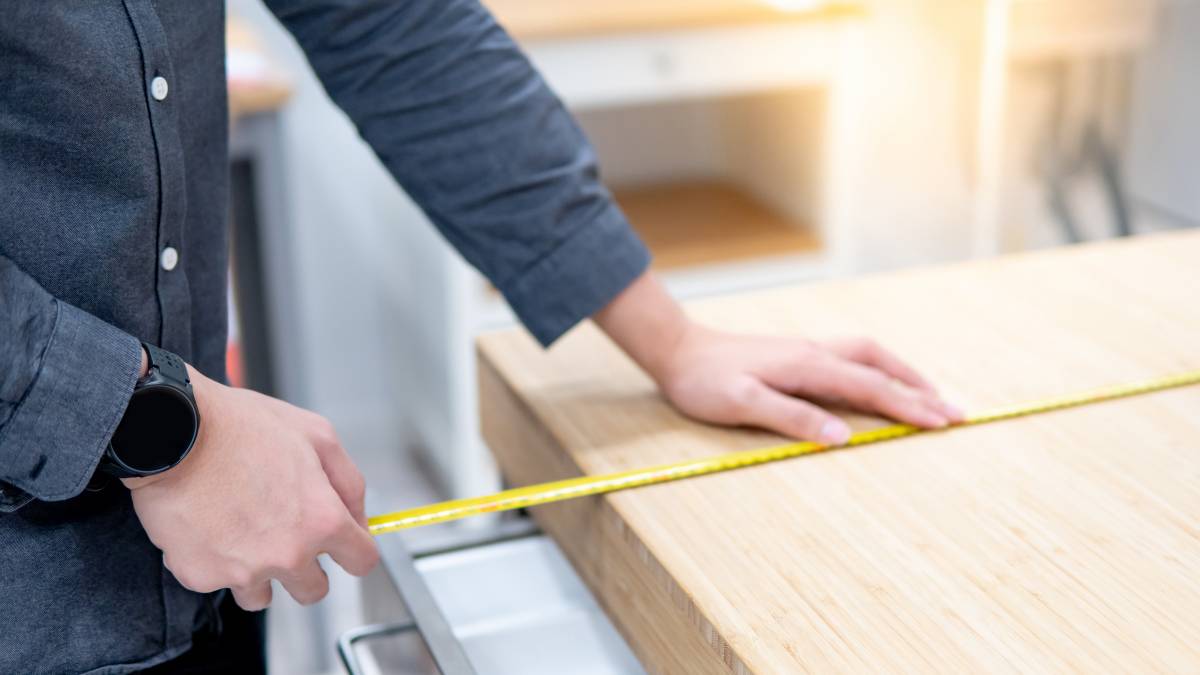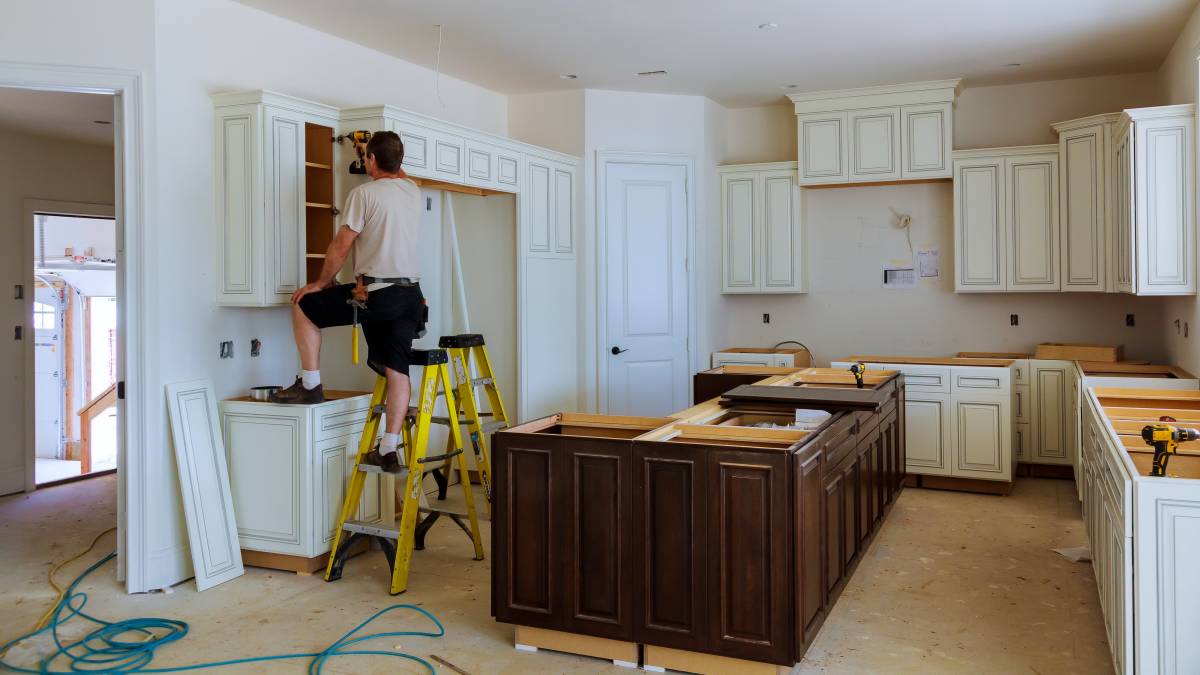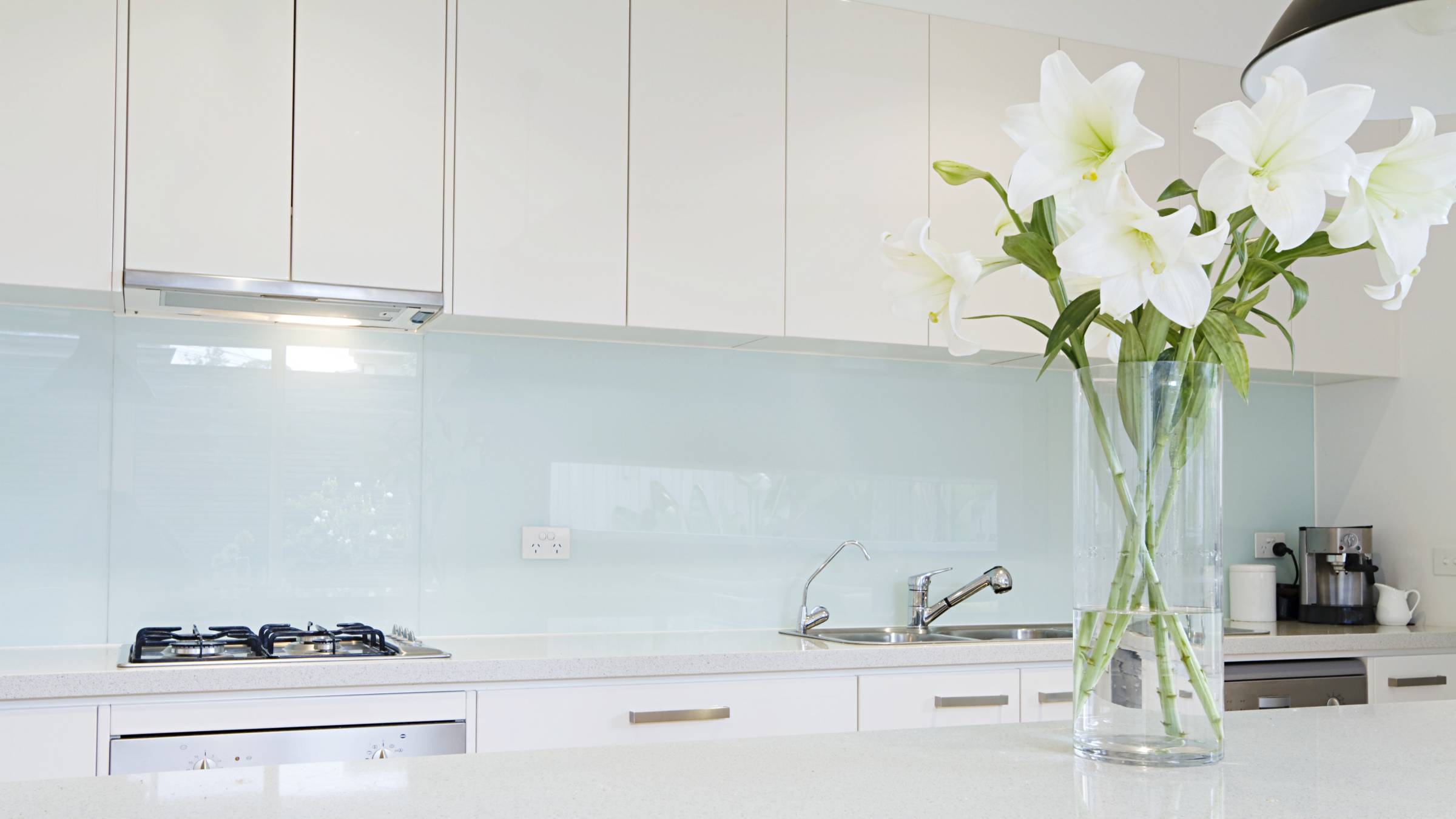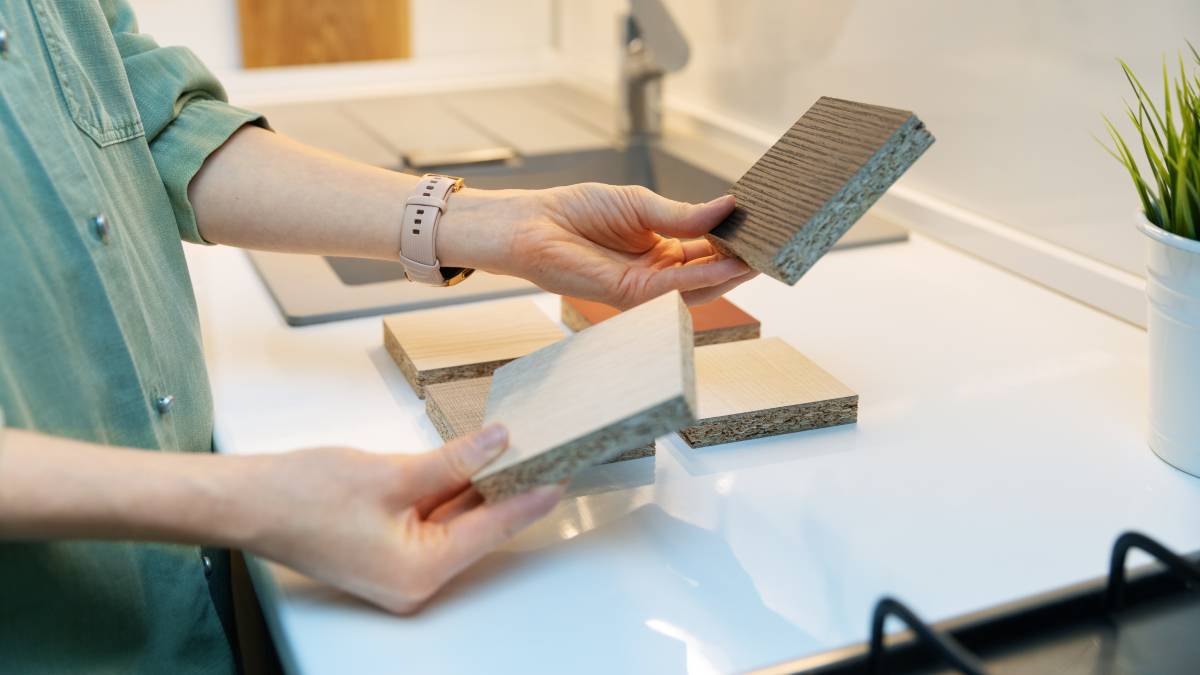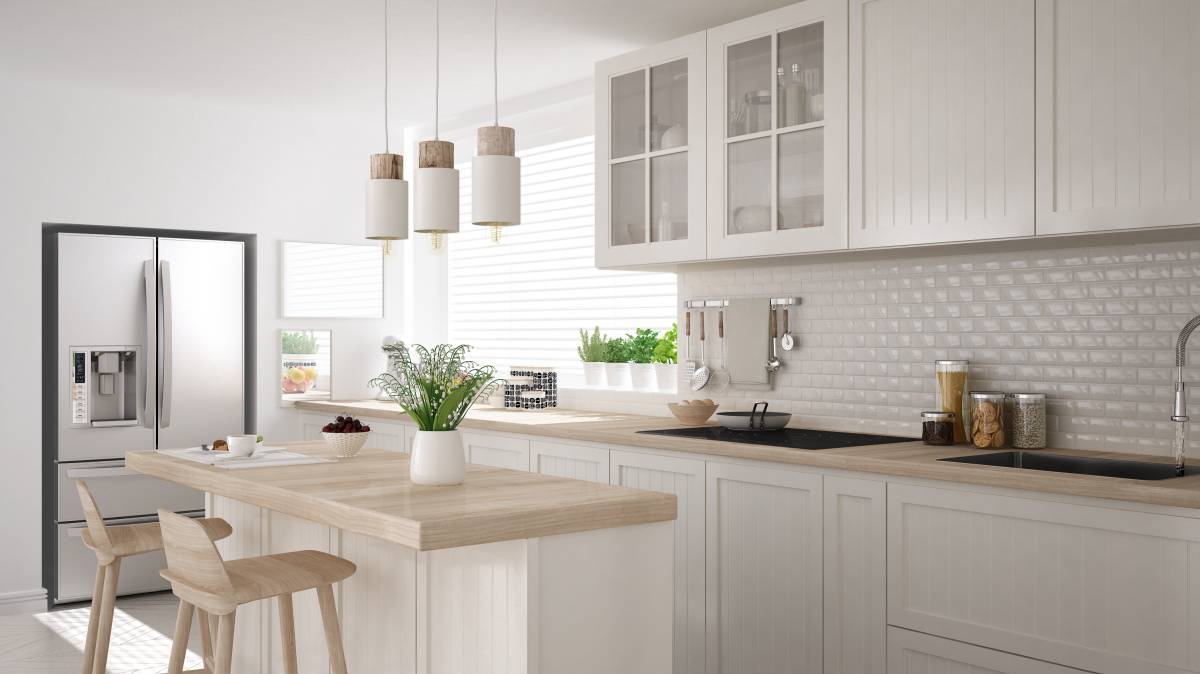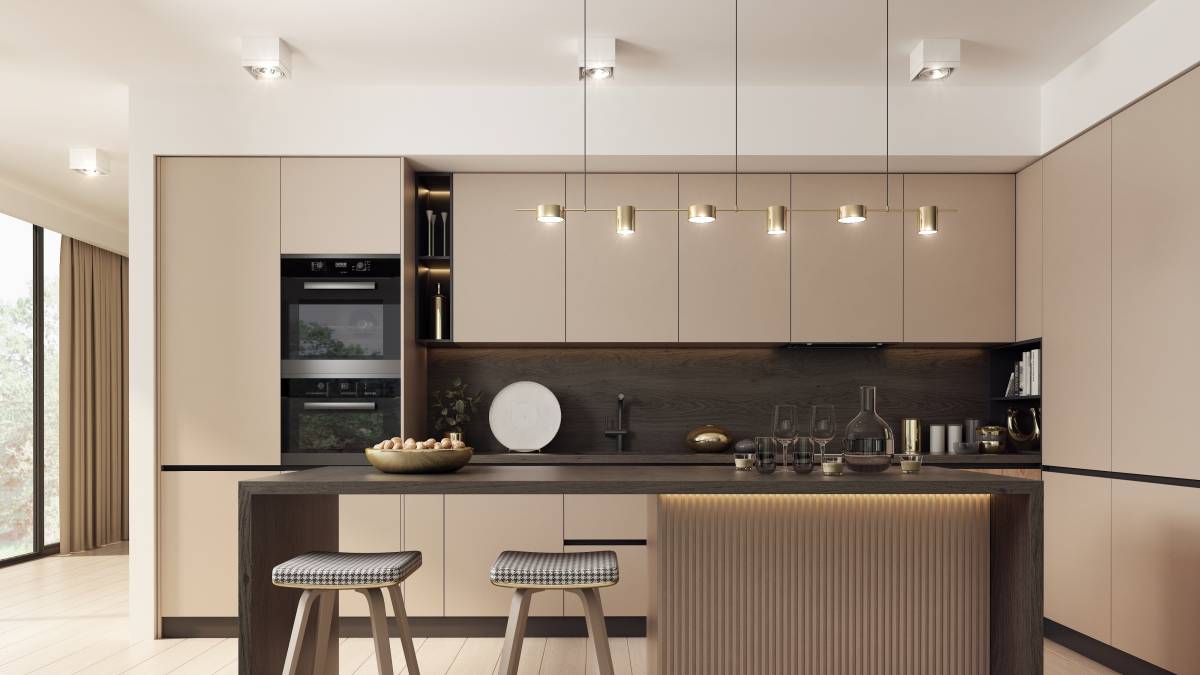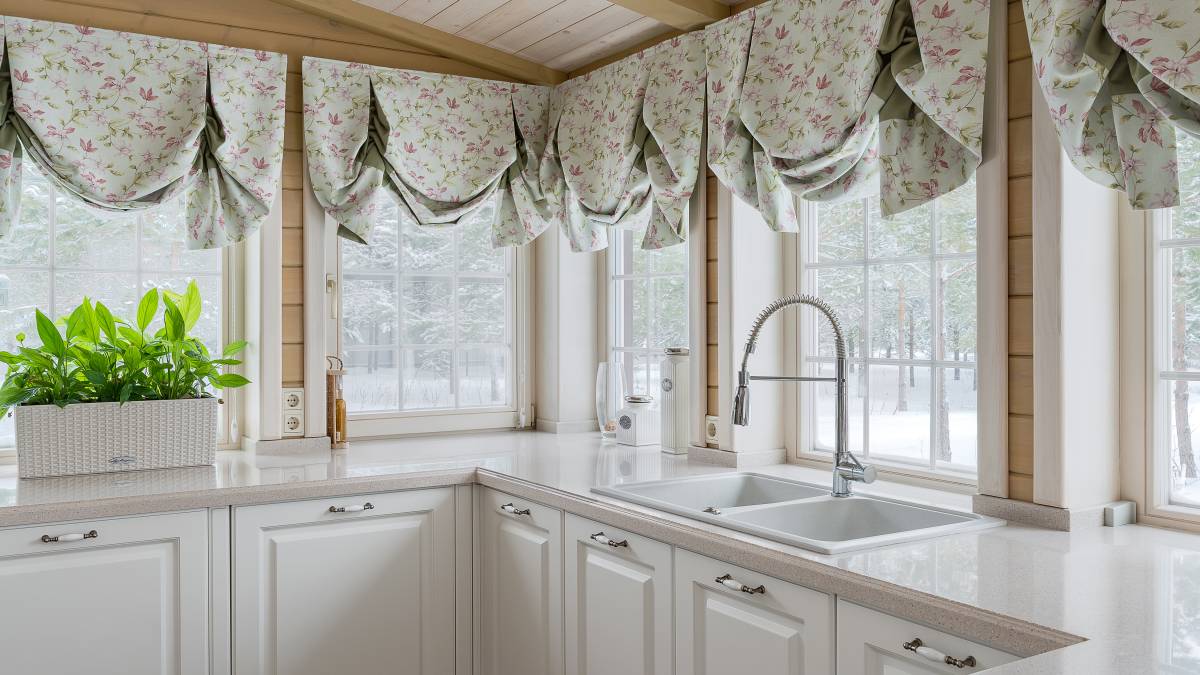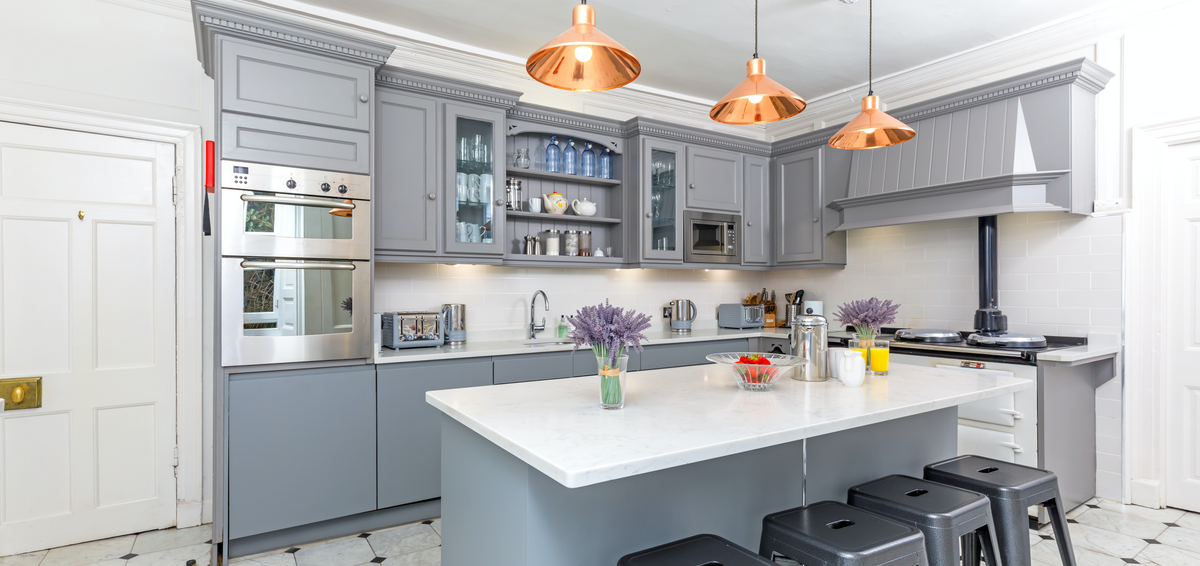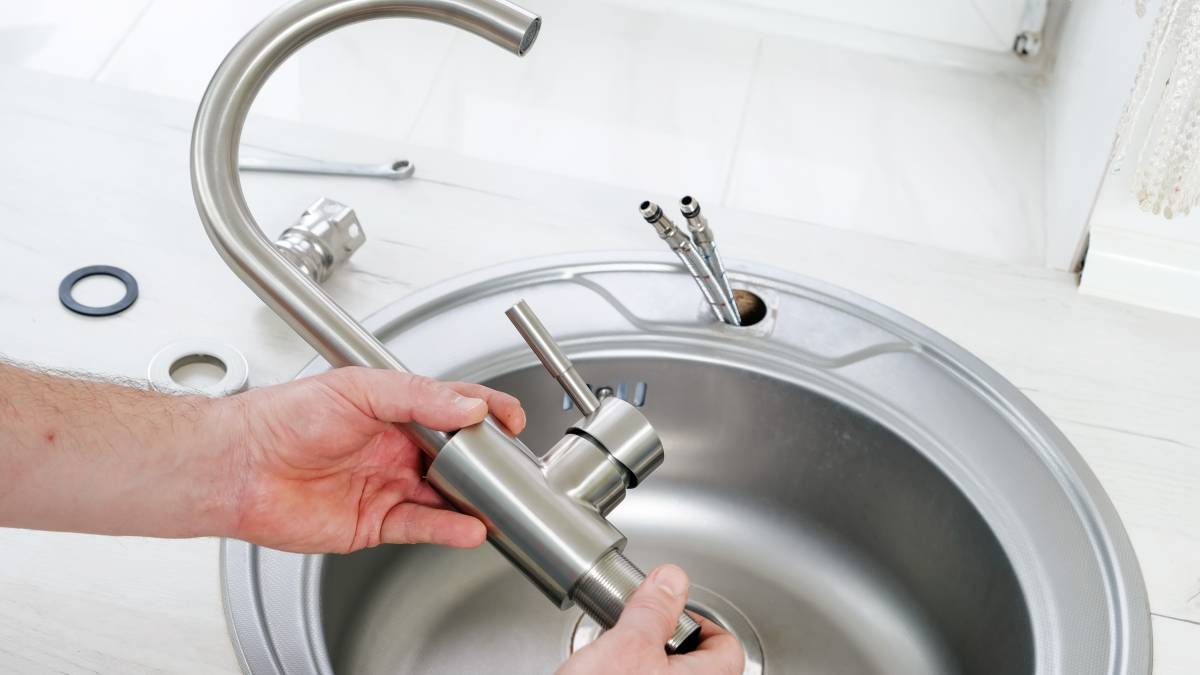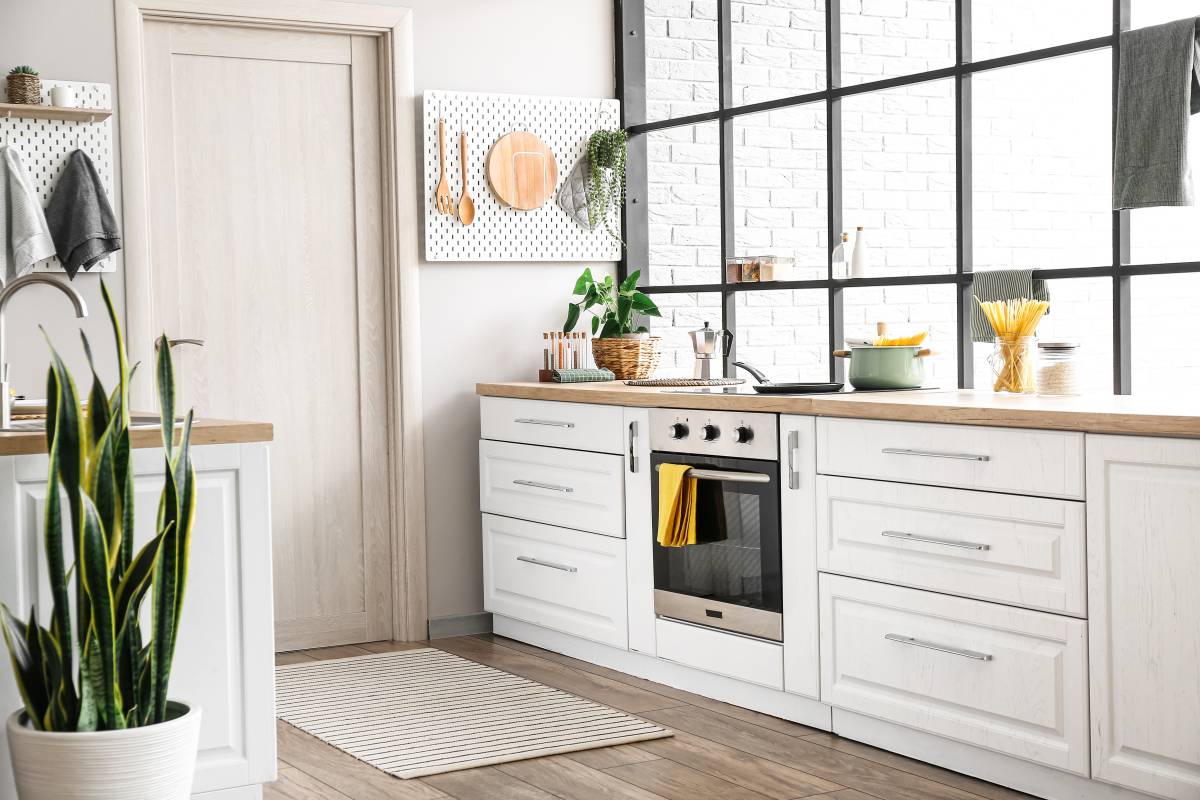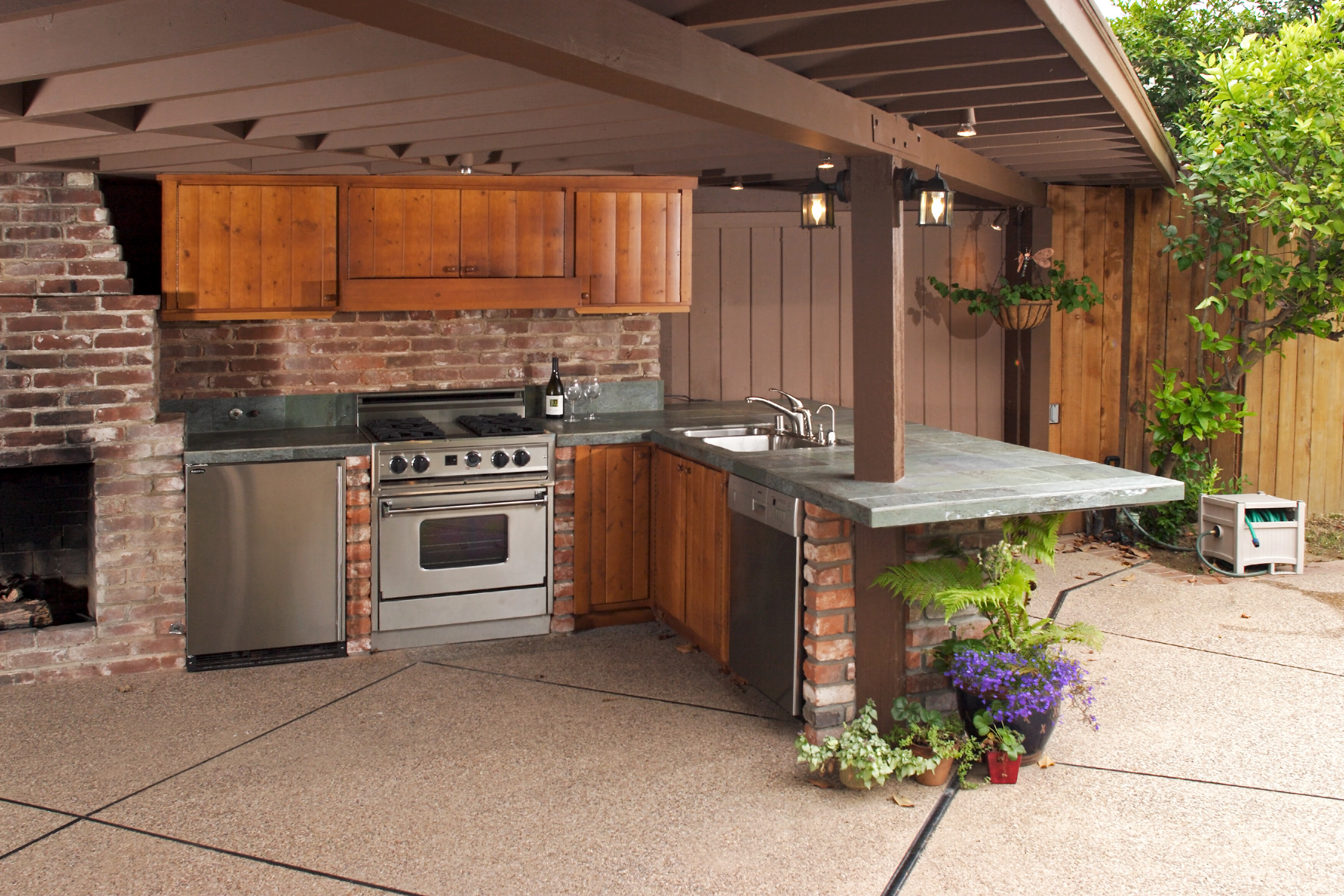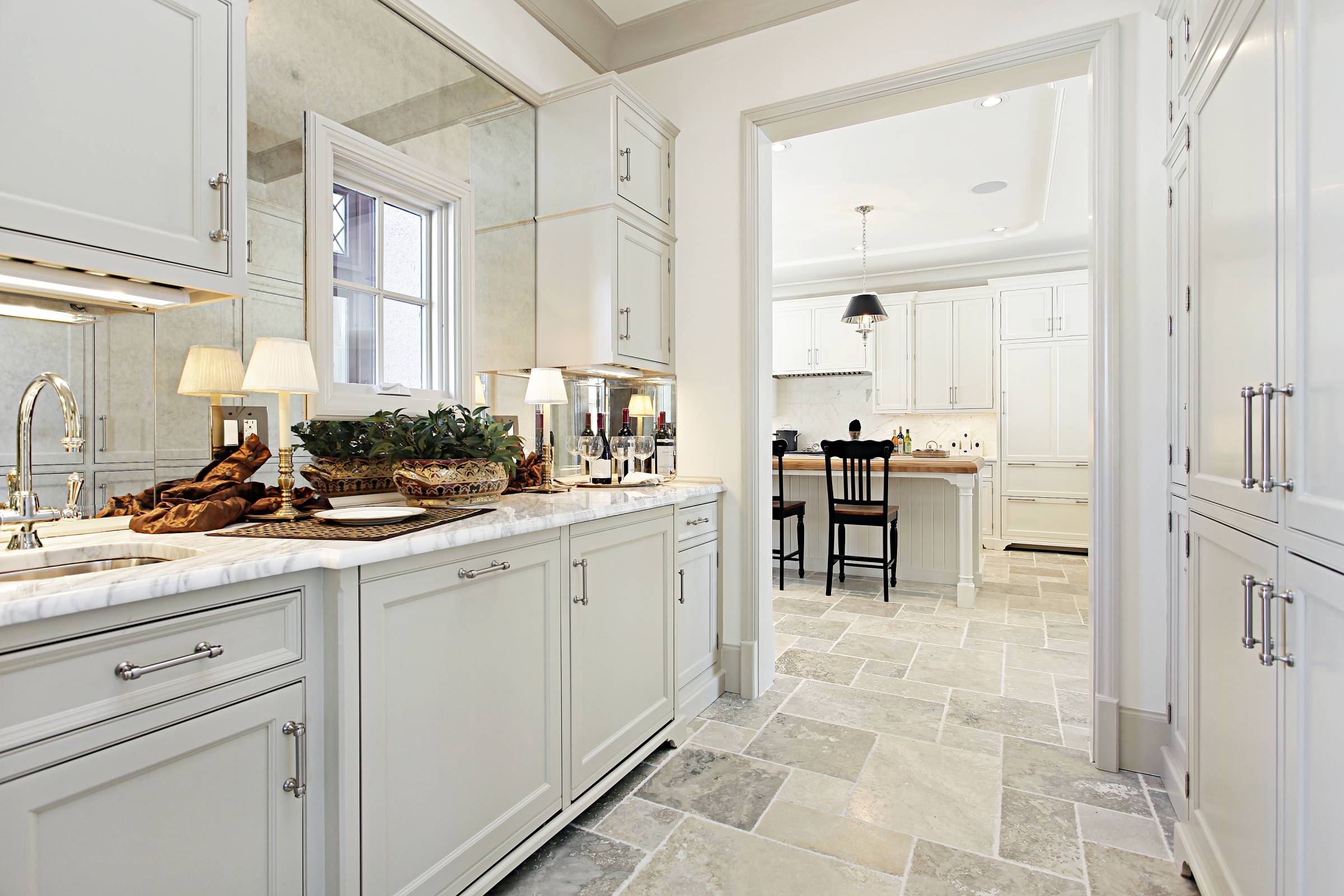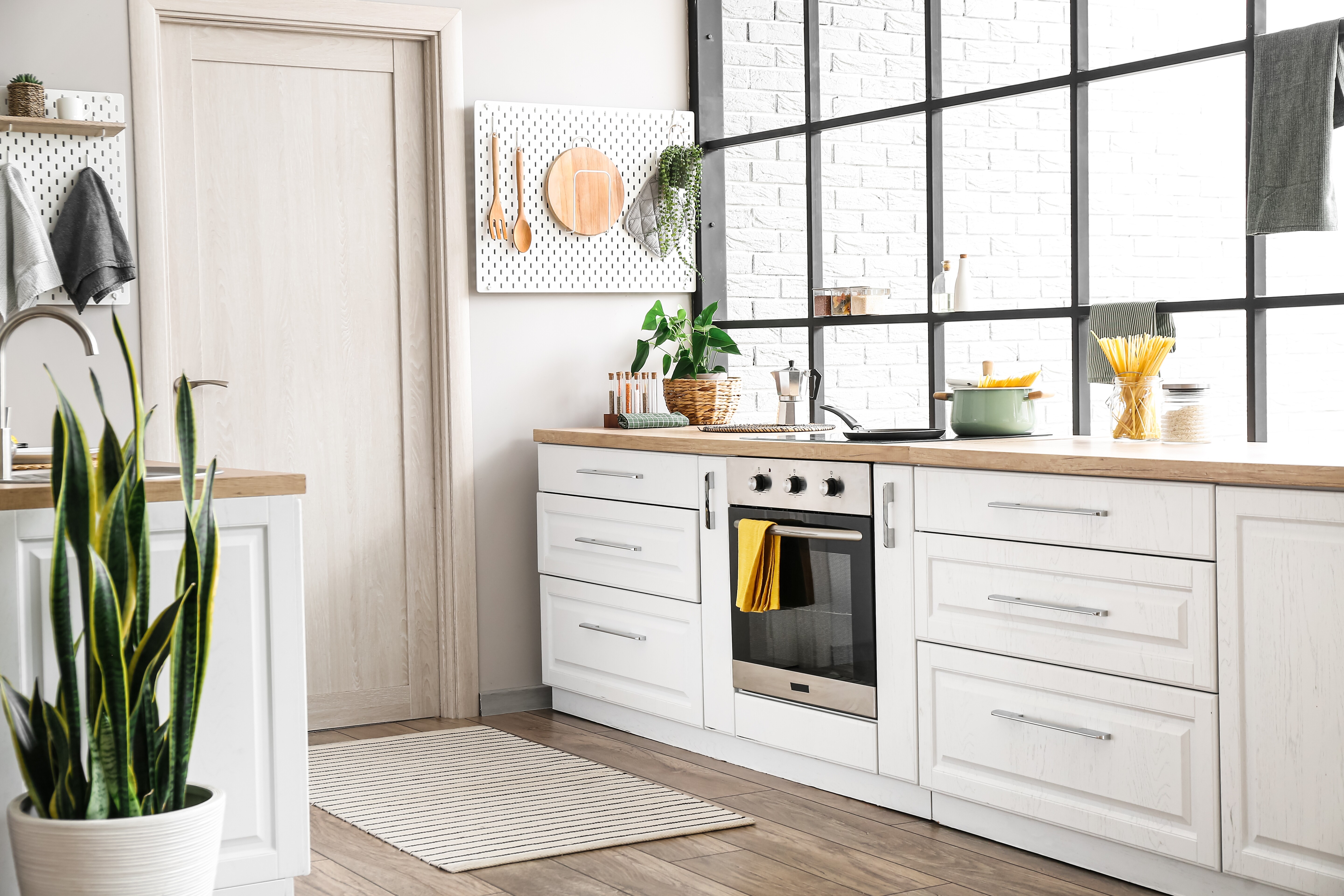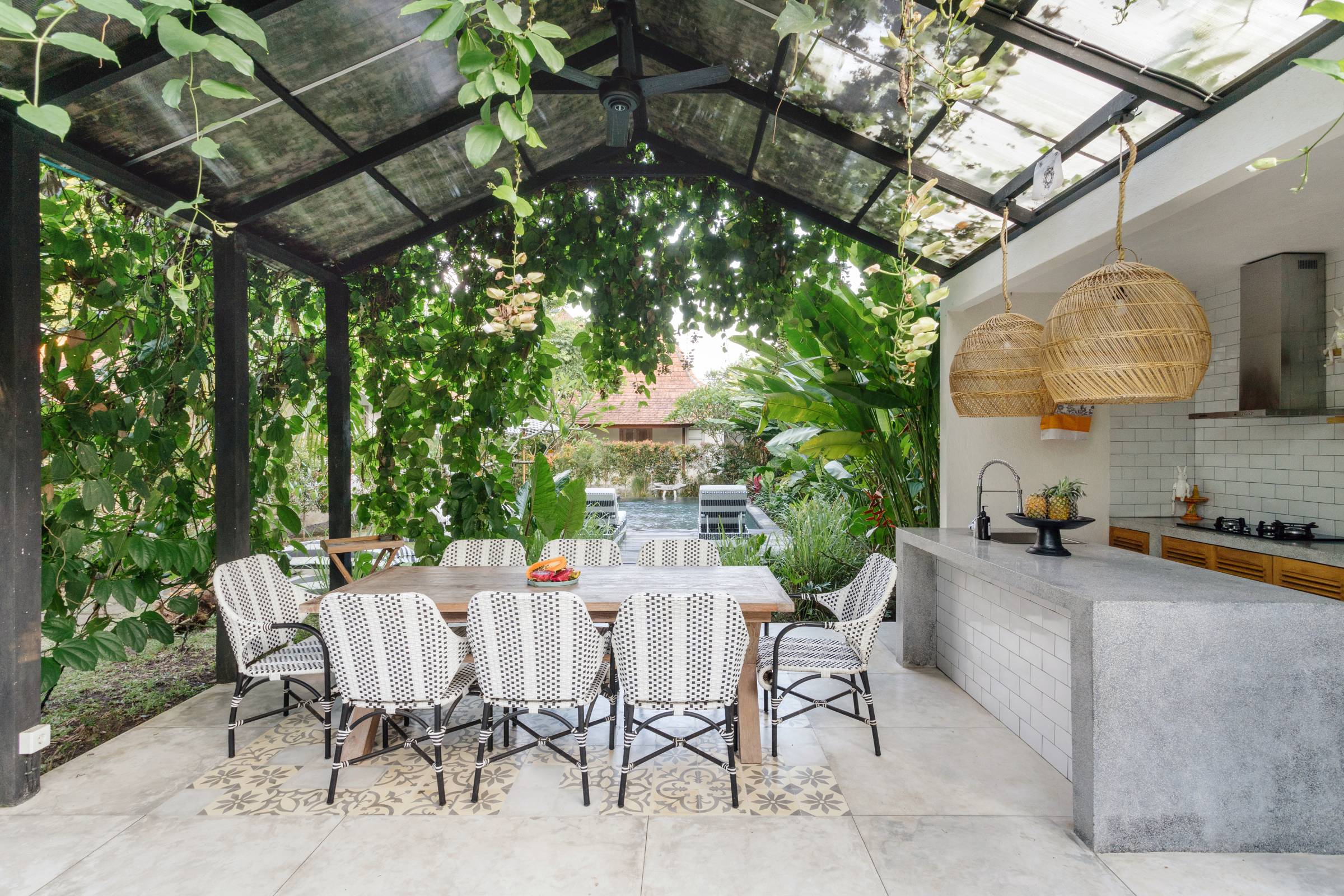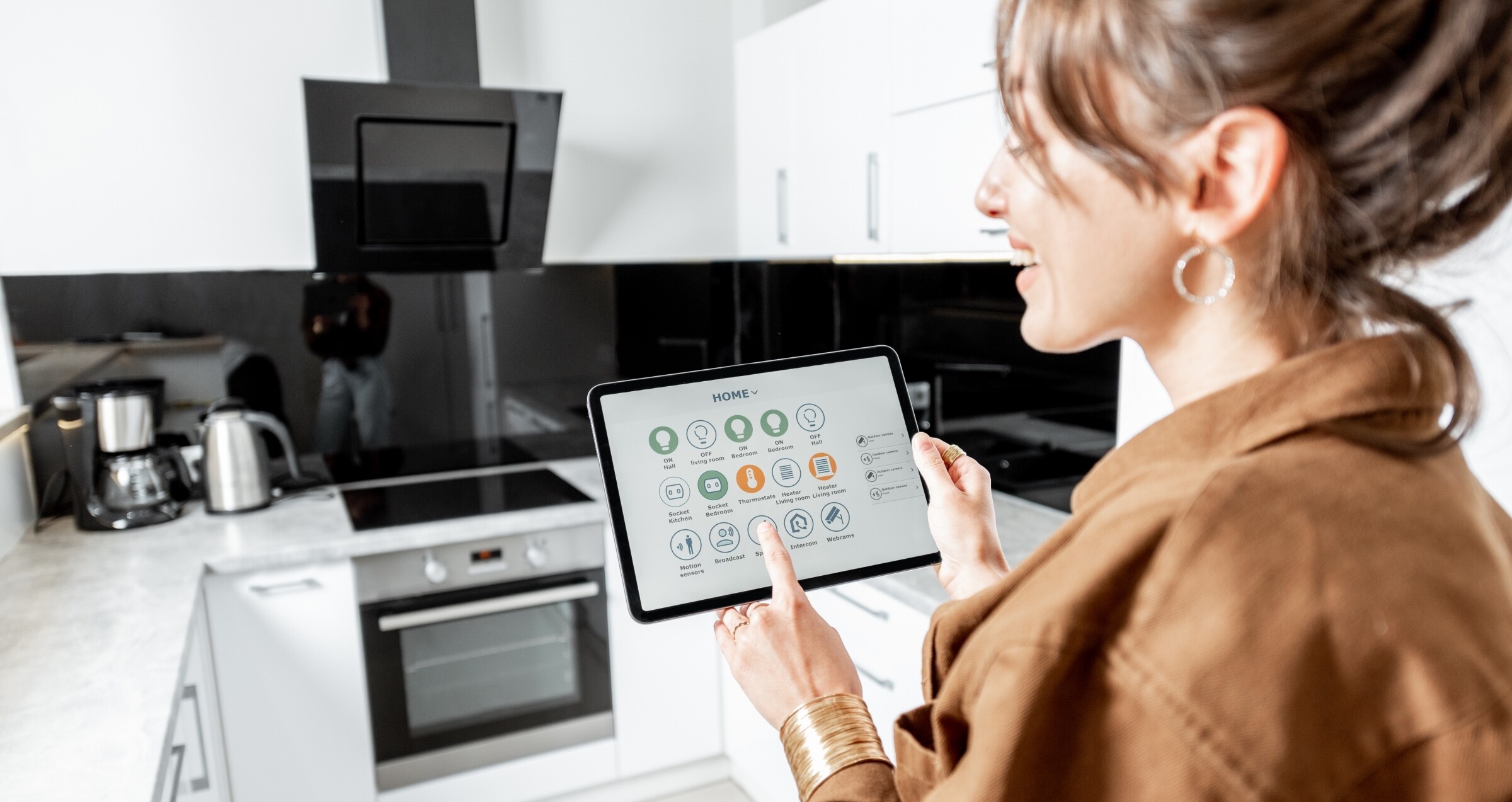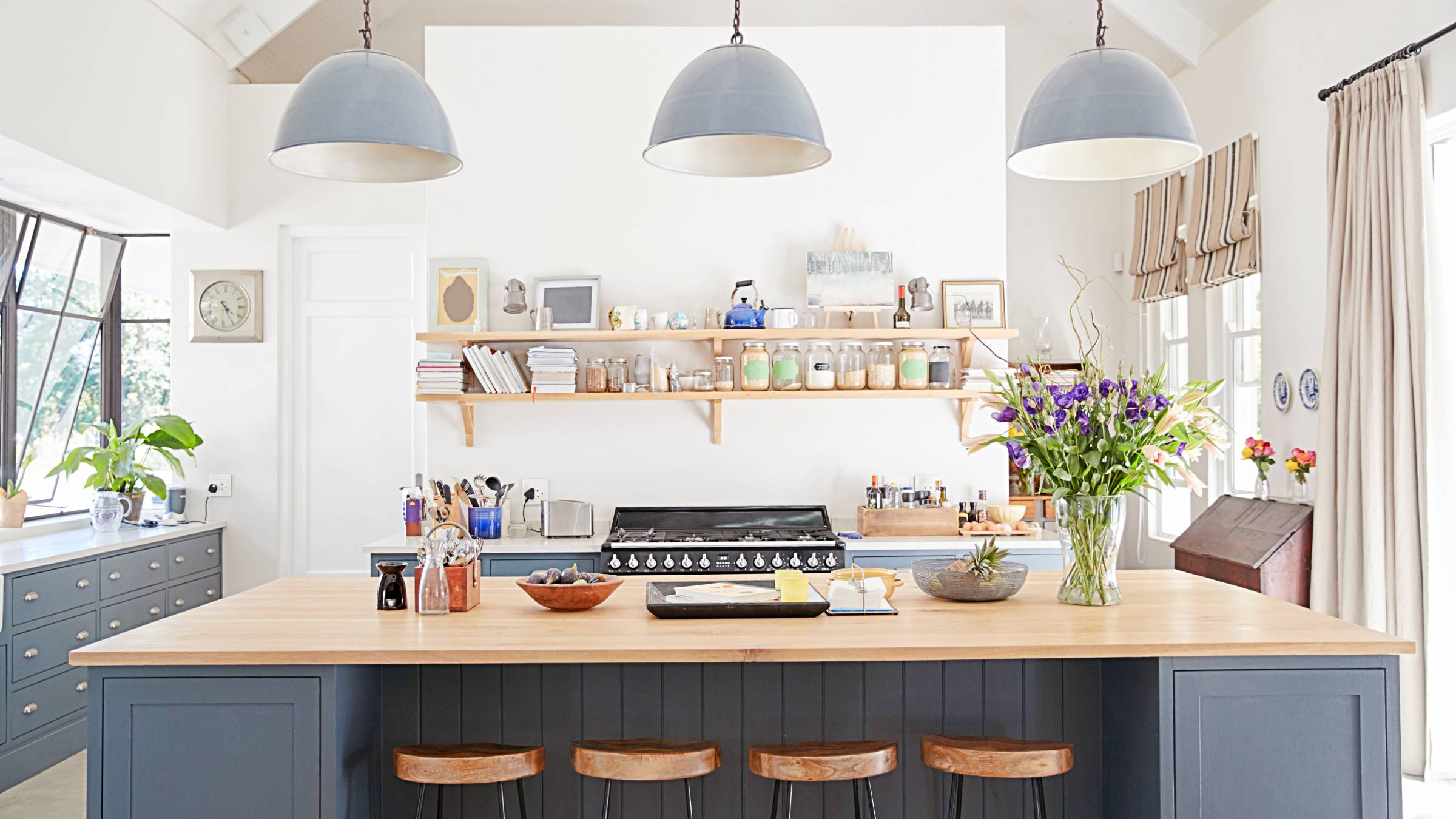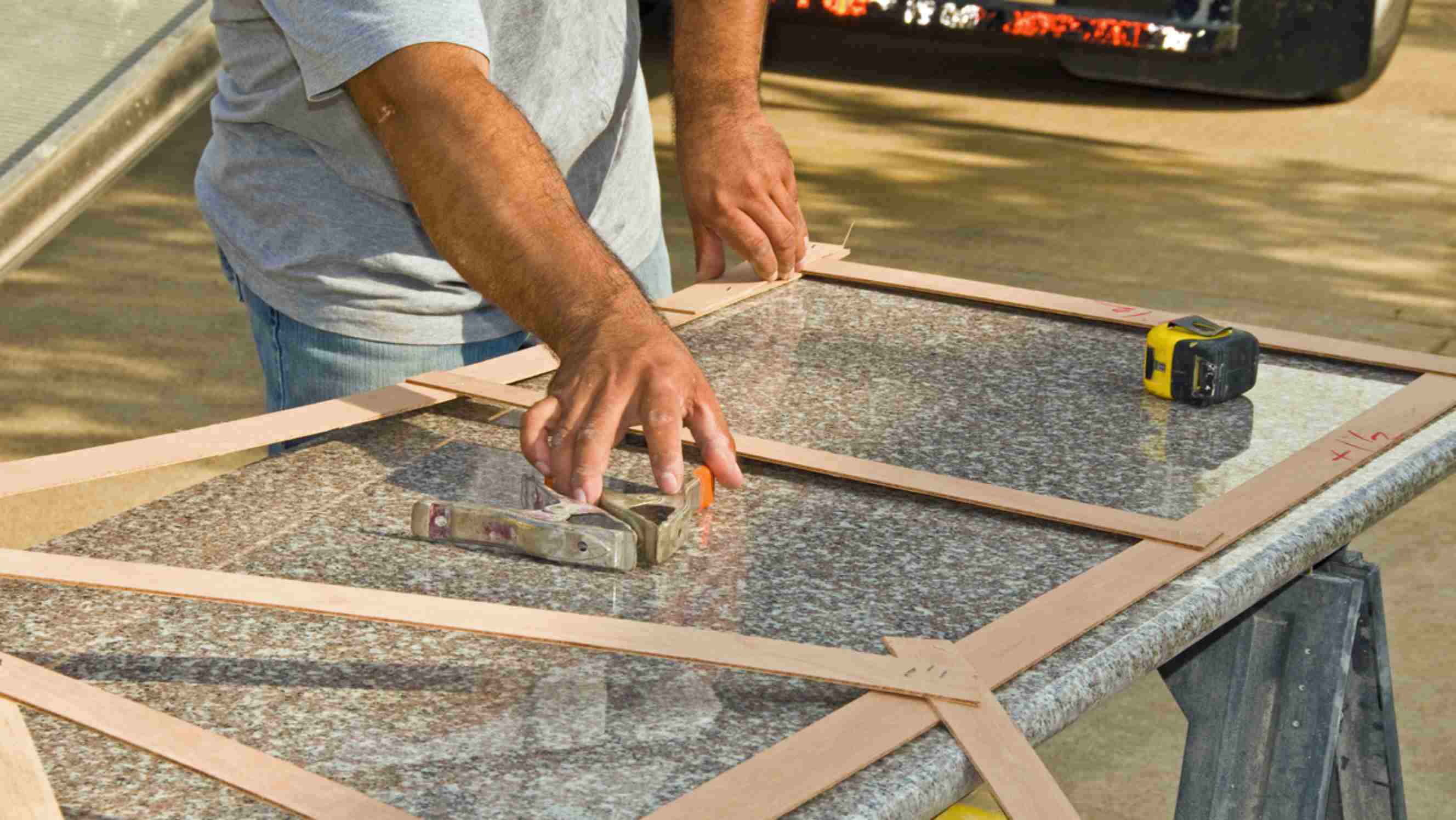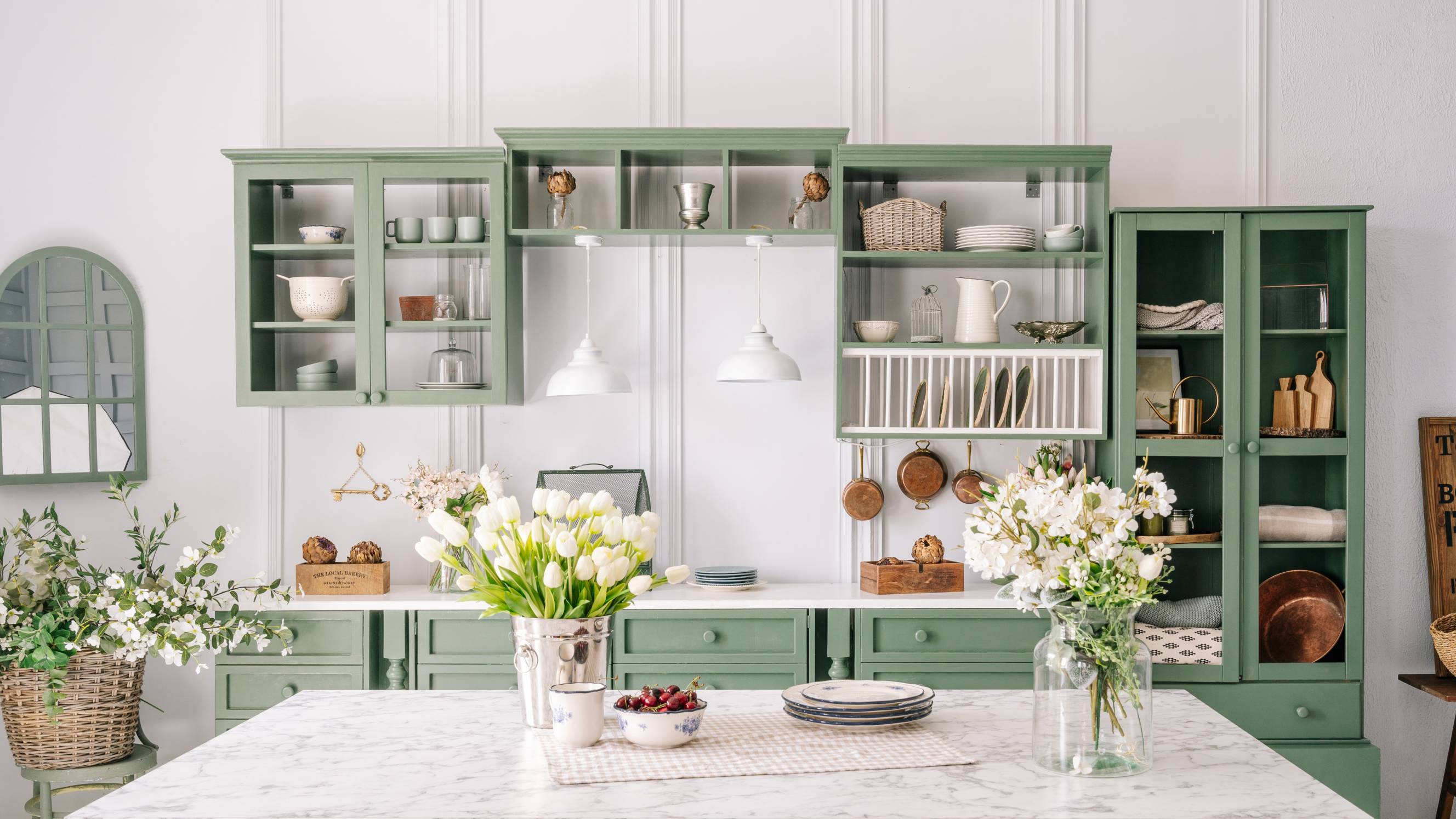- Home/
- Costs/
- Kitchen Renovation/
- IKEA Kitchen Cost Guide

IKEA kitchen cost in Australia: What you'll spend on design, materials, & installation
Get a free quote nowPost to find a price. It's free and only takes a minute.
Average kitchen installation costs, including labour and materials
$6,600 - $33,800
low
$6,600
median
$20,200
high
$33,800
Published on

Written by Angela A.
Staff Writer
Read more about our contributor
Key Facts
An IKEA kitchen and installation costs in Australia range between $6,600 and $33,800, depending on the kitchen size, materials, and labour required.
Some areas, like the City of Melville and Victoria, also charge permit fees ranging from a few hundred dollars to over $3,000, depending on the project scale.
IKEA offers sustainable kitchen solutions by using recycled materials and promoting waste reduction through their Buy-back and As-is programs.
Building permits for kitchen renovations in Australia start at $171.65, with fees varying based on local council requirements.
Australians are feeling more connected to their homes, with 43% reporting a positive shift in their feelings about their living spaces in 2022. But rising costs have made many rethink home improvement projects, including kitchen renovations. For instance, IKEA kitchens are known for combining affordability with customisation, so they’re now a go-to option for modern homeowners.
The IKEA kitchen installation cost in Australia typically falls between $6,600 and $33,800, influenced by factors like size, materials, and optional extras. This guide will dive more into how much does an IKEA kitchen cost, how you can budget confidently, and whether it’s really right for your home.
Advantages of installing an IKEA kitchen
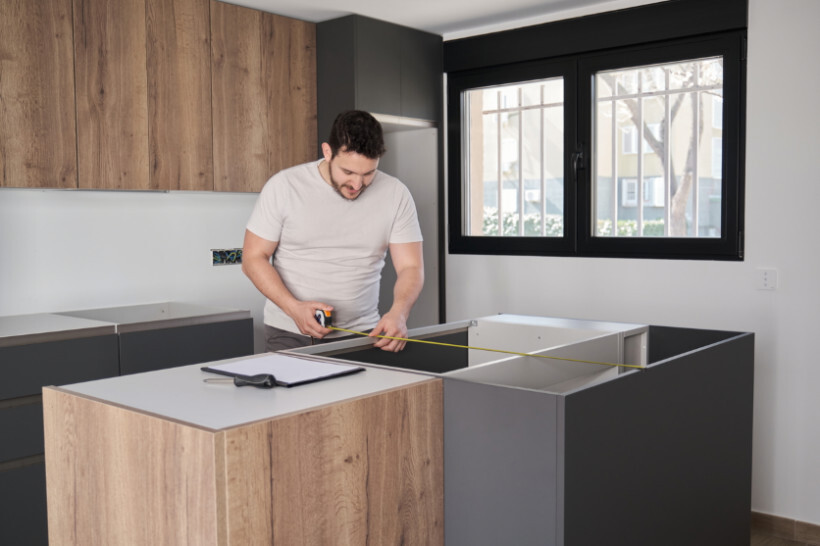 A man measuring benchtop space during a hands-on kitchen installation (Source: iStock)
A man measuring benchtop space during a hands-on kitchen installation (Source: iStock)
IKEA kitchens are a hit with homeowners. Let’s take a closer look at why so many people choose them for their homes.
Affordability
IKEA kitchen prices are budget-friendly, which is why they’re a popular choice for homeowners looking to save. Their cabinets start at $260, giving you great quality at a lower price point. Their flat-pack kitchens also help keep shipping and storage costs down
And if you’re up for some DIY, assembling the kitchen yourself can save you even more. A sample affordable setup is the KNOXHULT Unit Kitchen, which provides a budget-friendly solution with pre-matched cabinets and worktops.
Customisation
IKEA kitchens let you design a space that fits your style and needs perfectly. Their modular cabinets come in different sizes, finishes, and colours, so you can mix and match them to suit your layout. Plus, their kitchen planner tool makes it easy to visualise and tweak your design before buying.
You can also pair IKEA parts with custom fronts and benchtops for a personalised touch. A good example is the METOD Kitchen System, known for its flexibility and customisation options.
Sustainability
If you're all about making eco-conscious choices, IKEA kitchens are a great pick. They use recycled materials for many of their cabinets and aim to be a fully circular business by 2030. So, choosing an IKEA kitchen means you’re investing in a brand that’s working toward more sustainable practices.
Durability
Despite the flat-pack reputation, IKEA kitchens are built to last. Their cabinets are made from strong materials like MDF, solid wood, and composite layers. With proper care, they can last 10 to 20 years. And if you’re worried about longevity, the METOD range comes with a 25-year warranty for extra peace of mind.
Ease of assembly and installation
IKEA kitchens are made for DIYers who can work with just a few tips under their belt. Their pre-cut and pre-drilled parts come with clear instructions, so putting them together is straightforward. They also have a rail-mounting system that makes installing cabinets easier.
IKEA offers systems like the ENHET Kitchen System, which is ideal for quick and reconfigurable designs. Not into DIY? No problem—there are professional installers who can do the job for you, too.
What is the average price of an IKEA kitchen installation in Australia?
How much an IKEA kitchen installation costs depends heavily on your kitchen’s size and the finishes you select. Here’s a breakdown of what you can expect for small, medium, and large kitchens:
|
Kitchen size |
Material costs |
Labour costs |
Total average cost |
|---|---|---|---|
Small kitchens (Under 10 sqm) |
Cabinetry: $3,300 to $7,900 Countertops: $2,200 to $4,500 |
$1,100 to $2,500 |
$6,600 to $14,900 |
Medium kitchens (10-20 sqm) |
Cabinetry: $5,400 to $12,300 Countertops: $2,800 to $6,200 |
$2,500 to $4,500 |
$10,700 to $23,000 |
Large kitchens (20 sqm or more) |
Cabinetry: $8,200 to $17,300 Countertops: $4,000 to $9,500 |
$3,500 to $7,000 |
$15,700 to $33,800 |
If you’re planning a small kitchen (under 10 sqm), expect to pay between $6,600 and $14,900. This includes cabinetry, which typically costs $3,300 to $7,900, and countertops ranging from $2,200 to $4,500. Labour costs are lower for small kitchens, usually between $1,100 and $2,500.
For medium kitchens (10–20 sqm), the average cost is $10,700 to $23,000. Cabinets fall in the range of $5,400 to $12,300, while mid-sized countertops cost between $2,800 and $6,200. Labour costs also increase with size, sitting at around $2,500 to $4,500.
A large kitchen (20 sqm or more) is the most expensive, with total costs ranging from $15,700 to $33,800. Cabinets alone can cost $8,200 to $17,300, while premium countertops for large spaces range from $4,000 to $9,500. Labour for large installations, which often require more time and effort, averages $3,500 to $7,000.
What factors affect the costs of IKEA kitchen installation?
The price of installing an IKEA kitchen isn’t set in stone. It varies depending on several factors. Everything from the size of your kitchen and the materials you choose to the complexity of the design and labour requirements can influence the final cost. If you’re working with a tight budget or planning to go all out, understanding these factors will help you make smarter decisions and avoid surprises.
Location and labour
|
Location |
Average kitchen installation costs* |
|---|---|
$8,060 to $16,120 |
|
$7,160 to $14,320 |
|
$6,920 to $13,840 |
|
$7,160 to $14,320 |
|
$7,470 to $14,940 |
|
$6,640 to $13,280 |
|
$7,940 to $15,880 |
|
$7,190 to $14,380 |
|
$7,250 to $14,510 |
|
$7,230 to $14,460 |
|
$7,610 to $15,220 |
|
$6,210 to $12,420 |
*These numbers are general labour estimates for a 2–4 week kitchen installation that involves a plumber, electrician, carpenter, and painter. Real costs can vary based on how many hours each trade spends on the job, local market rates, and other factors.
Where you live has a big impact on the cost to have an IKEA kitchen installed. In cities like Sydney, Brisbane, and Canberra, installation costs usually fall between $7,160 and $16,120 because tradespeople charge more in areas with higher living expenses. On the other hand, places like Melbourne, Hobart, and Adelaide tend to have lower starting prices, ranging from $6,210 to $15,220.
If you’re in towns like Geelong, Newcastle, or Ipswich, you might pay a bit less, with costs starting around $6,920. But in regional or rural areas, extra travel fees—often $50 to $150 per trip—can add to the bill if tradespeople have to cover long distances. Sometimes, the wait for experienced installers is longer, too, especially in less populated areas.
Delivery fees can also depend on where you’re located. Cities like Perth and the Gold Coast have easy access to IKEA stores, which helps keep shipping costs down. Meanwhile, in more remote areas, you could face higher delivery surcharges if products need to be shipped from farther away.
Complexity of the kitchen layout and size
|
Kitchen layout |
Average kitchen installation costs* |
|---|---|
Straight-line or one-wall kitchens |
$2,500 to $4,000 |
Galley kitchens |
$3,500 to $6,000 |
L-shaped kitchens |
$4,000 to $7,500 |
U-shaped kitchens |
$5,500 to $9,500 |
Island kitchens |
$7,000 to $12,000 |
*Considering both IKEA and non-IKEA kitchen fixtures and labour rates
The layout and size of your kitchen influence how much it costs to get kitchen cabinets installed and the fixtures that can be added. Simple layouts, like straight-line kitchens where basic KNOXHULT cabinets can sit along one wall, are the most affordable at $2,500 to $4,000. Galley kitchens, which can have two rows of ENHET modules facing each other, cost more—around $3,500 to $6,000—because aligning both sides takes extra work.
More complex layouts like L-shaped kitchens, which use two connected walls, can use METOD system fixtures but may cost between $4,000 and $7,500. This is especially the case if corner cabinets or special fittings are needed. U-shaped kitchens wrap around three walls and offer more storage, but come with a price tag of $5,500 to $9,500 due to the extra cabinetry and materials involved.
Island kitchens are the priciest, averaging $7,000 to $12,000. Adding an island often means additional plumbing or electrical work for sinks or stovetops, increasing labour costs. Larger kitchens or those with premium kitchen benchtop types, like quartz or stone, will also push costs higher.
Structural modifications or plumbing work
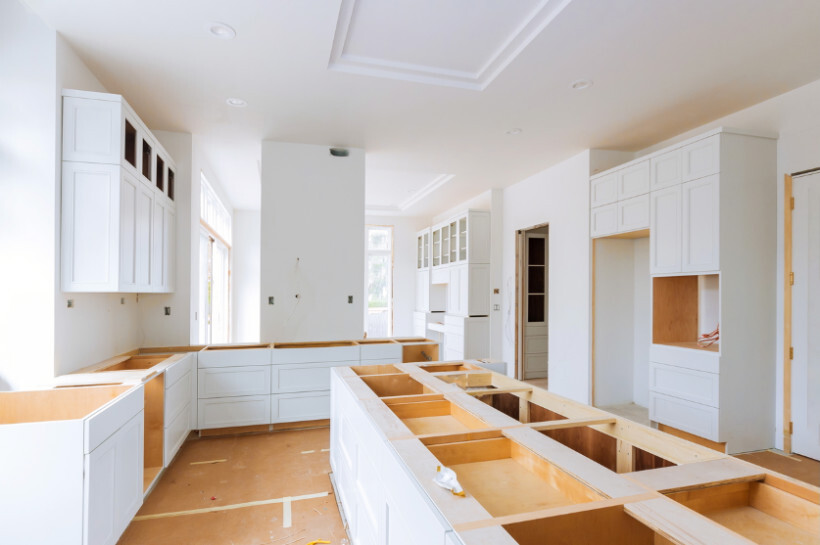 Modular kitchen layout under construction with base cabinets installed (Source: iStock)
Modular kitchen layout under construction with base cabinets installed (Source: iStock)
Making changes to your kitchen’s structure or plumbing can quickly increase even a relatively budget-friendly IKEA kitchen’s assembly cost. Knocking down a wall to open up the space costs $2,000 to $6,000, while reinforcing walls to handle heavier cabinets adds $500 to $1,500 per wall. If you need to replace or adjust flooring to fit your new kitchen, it’ll cost about $40 to $150 per square metre.
Plumbing adjustments are another big factor. Moving a sink can cost $800 to $2,000, depending on how tricky the pipework is. If you’re adding plumbing for an island with a sink or dishwasher, expect to pay $1,000 to $3,000. Garbage disposals will cost an extra $150 to $500, too.
These kinds of updates often mean bringing in carpenters and plumbers, which adds to the overall labour bill. Electrical work, like adding outlets or under-cabinet lighting, can cost $100 to $200 per outlet or up to $3,000 for rewiring. So, if your kitchen plan includes major structural or plumbing changes, it’s good to plan for these extra costs from the start.
Customisation options or requests
|
Custom kitchen options |
Average costs* |
|---|---|
Custom cabinetry and storage |
$680 to $1,450 |
Non-standard cabinet dimensions |
$300 to $700 per cabinet |
Premium countertops and cabinet fronts |
Laminate countertops: $350 to $650 per sqm Quartz countertops: $2,000 to $5,000 total Custom wood or veneer cabinet fronts: $400 to $800 per unit |
Custom islands |
$2,000 to $5,000 |
Lighting |
$200 to $600 |
*Considering materials and units alone
Customising your IKEA kitchen can make it more personal and functional, but it comes at an extra cost. For example, pull-out pantries can set you back $500 to $1,100.
If your kitchen needs non-standard cabinet sizes, hiring cabinet makers to create custom fronts or panels can cost $300 to $700 per cabinet, depending on the material. These are often necessary for kitchens with awkward layouts or unique spaces.
Premium materials are another factor. While laminate countertops are affordable at $350 to $650 per square metre, quartz options cost $2,000 to $5,000 in total. There are also custom wood or veneer drawer fronts priced at $400 to $800 per unit.
Adding a custom island or under-cabinet lighting can also raise the price. A custom island costs $2,000 to $5,000, especially if it includes built-in storage or appliances.
For those not assembling the kitchen themselves, professional help can cost $80 to $150 per cabinet. Moreover, lighting upgrades, like LEDs for under cabinets, cost $200 to $600. And finishing touches like painting the cabinets can add more depending on the design.
Pre-existing kitchen condition
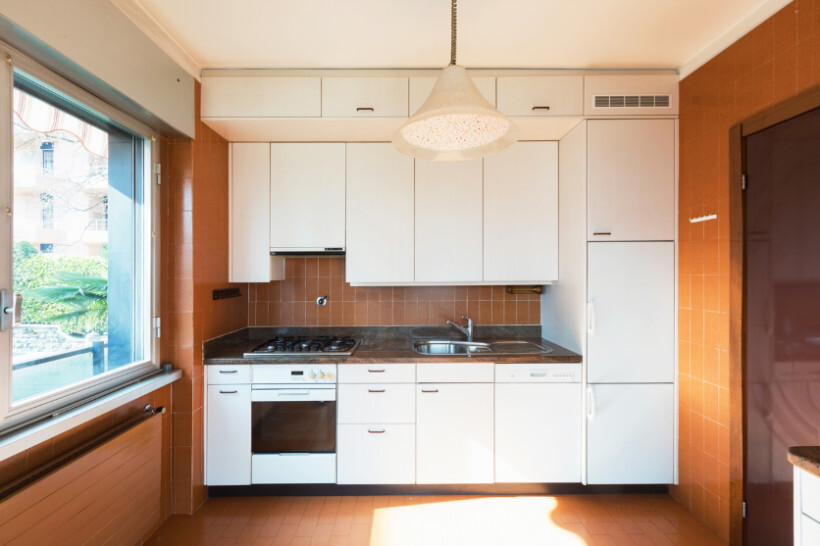 An existing kitchen space ready for IKEA upgrade or full remodel (Source: iStock)
An existing kitchen space ready for IKEA upgrade or full remodel (Source: iStock)
The condition of the kitchen plays a big role in how much an IKEA kitchen renovation costs in Australia. Demolishing old cabinets, countertops, and flooring can add $600 to $1,500 to your expenses. Disposal fees for clearing out debris also typically cost an extra $200 to $500, based on the volume of waste you’d end up with.
Repairs and prep work often add to the bill as well. Fixing drywall costs around $30 to $90 per square metre, while levelling uneven floors can range from $40 to $100 per square metre. If plumbing repairs are needed, like addressing outdated pipes, expect to pay $100 to $150 per hour on top of those.
Outdated wiring is another factor that may increase costs. Rewiring to meet modern safety standards can cost anywhere between $1,500 and $3,000, depending on the kitchen size. Preparing for additions like kitchen islands and peninsulas may also require extra adjustments, further raising labour and material expenses.
Appliance integration
|
Appliance needs |
Average costs* |
|---|---|
Built-in appliances |
$500 to $1,600 |
Range hoods and ventilation |
$600 to $1,500 |
Integrated refrigerators or freezers |
$800 to $2,000 |
Plumbing for sinks and dishwashers |
$800 to $2,000 |
Electrical wirings |
$150 to $300 per outlet |
*Considering labour and installation alone
Adding appliances to your IKEA kitchen can bump up the cost to install an IKEA kitchen as well, especially if you want built-in options that require accurate measurements.
Appliances like ovens, dishwashers, and microwaves must fit perfectly into your kitchen space and cabinets, and installation can cost about $500 to $1,600 each. For example, installing a dishwasher might cost $500 to $1,200, while an oven can set you back $700 to $1,500.
Installing range hoods and ventilation systems adds more to the bill, too. Depending on whether ductwork or wall changes are needed, range hood installation costs about $600 to $1,500. If you’re integrating a panel-ready fridge or freezer, expect to pay $800 to $2,000. Custom panels will cost an extra $300 to $700.
Plumbing and electrical work often come with appliance installations too. Adjusting plumbing for a sink or dishwasher can cost $800 to $2,000, depending on how much needs to be moved or added. You’ll also need dedicated outlets for certain appliances, costing $150 to $300 per outlet. These additional steps can quickly increase your overall costs.
Permits and compliance
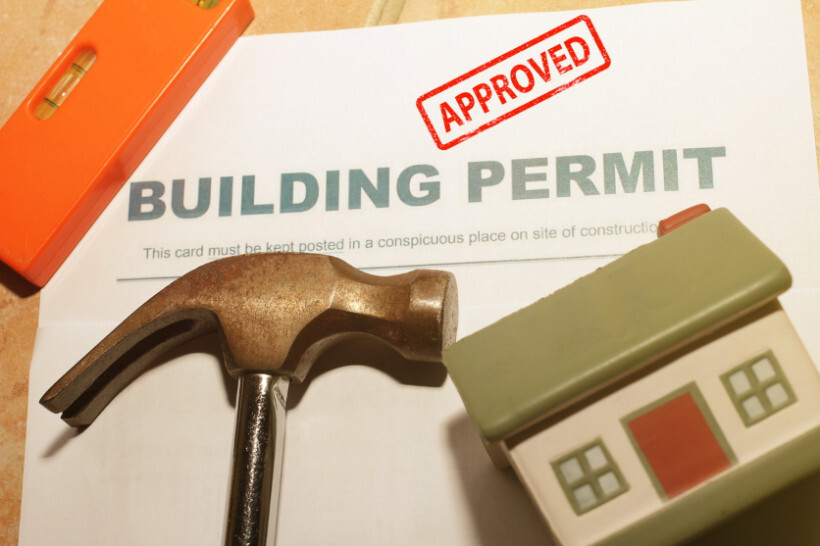 Approved building permit required for major IKEA kitchen renovations (Source: iStock)
Approved building permit required for major IKEA kitchen renovations (Source: iStock)
Renovating your kitchen usually means dealing with permits to meet local building rules, which can add to your costs. For smaller projects, permits often cost a few hundred dollars. For example, in the City of Melville, you’ll pay $171.65, plus 0.32% of the construction cost for uncertified applications.
If your renovation is more extensive, like a full kitchen remodel, the permit fees will be higher. In Victoria, permits for bigger projects usually start at $3,000 plus GST, depending on how much the construction is worth. Some states also add a levy of $1.28 per $1,000 for projects costing over $10,000.
Ultimately, the cost of permits depends on several factors, like the complexity of the work, where you’re located, and the total value of the project. Big changes, like knocking down walls or moving plumbing, might need extra approvals, which push costs up. You might also need to hire architects or surveyors to handle paperwork and inspections, which adds to the overall expense.
Additional considerations
| Additional considerations |
Average kitchen costs |
|---|---|
Waste removal and disposal |
$800 to $2,000 |
Electrical work |
New power outlets: $150 to $300 per outlet Rewiring: $1,500 to $3,000 Installing or upgrading circuit breakers: $800 to $2,000 |
Lighting installation |
Under-cabinet LED lighting: $200 to $600 Ceiling lighting fixtures: $150 to $300 per fixture Pendant lights over an island: $200 to $500 each |
Plumbing work |
$150 to $2,000 |
Flooring adjustments |
$40 to $150 per sqm |
There are a few more extra costs to think about when installing your IKEA kitchen to make sure everything works and looks right. Getting rid of the old kitchen and other wastes can cost $800 to $2,000, including removing cabinets, countertops, and other debris.
You’ll likely need some new power outlets too. These cost $150 to $300 each, while rewiring for high-power appliances like ovens can cost $1,500 to $3,000. If your circuit breaker needs an upgrade for a more sustainable smart kitchen, that adds another $800 to $2,000.
Good lighting is essential for a functional and stylish kitchen. So, prepare for under-cabinet LED lights, which can cost $200 to $600, and ceiling lights that run about $150 to $300 each. Pendant lights for islands are a bit pricier, $200 to $500 per light, but they make a big difference in both style and visibility.
Plumbing changes like moving a sink costs $800 to $2,000. Adding water lines for a dishwasher or fridge ranges from $500 to $1,500. Even something simple, like upgrading a tap or faucet, can add $150 to $500.
Lastly, don’t forget about flooring. Laminate flooring costs $40 to $100 per square metre, while tiles can go from $50 to $150 per square metre, depending on the type. These extras might not be the first thing you think of when considering your kitchen’s design, but they’re important for a complete and polished finish.
Hiring IKEA’s partner installers vs. independent contractors
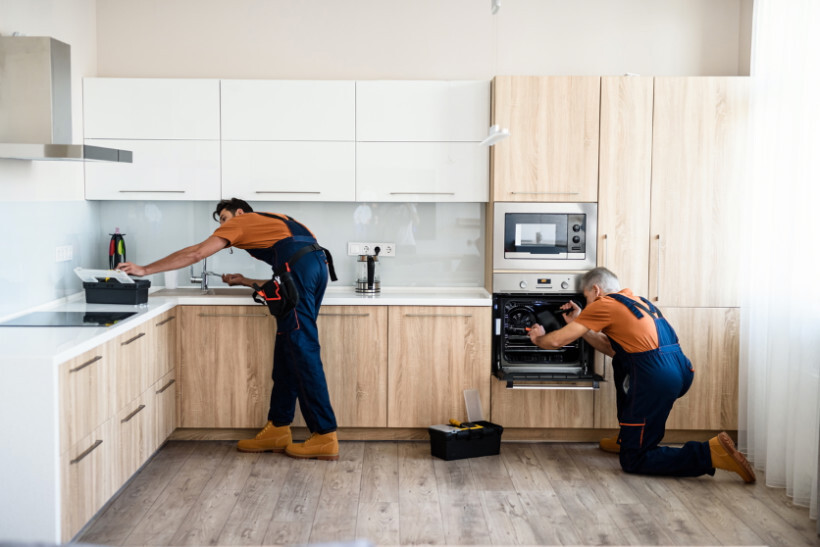 Professionals fitting cabinetry and appliances during kitchen installation (Source: iStock)
Professionals fitting cabinetry and appliances during kitchen installation (Source: iStock)
When it comes to installing your IKEA kitchen, you’ve got two main options: IKEA’s partner installers or independent contractors. Each comes with its own pros and cons, depending on your budget and how involved you want to be.
IKEA’s partner installers are trained specifically to assemble IKEA products, whether METOD, ENHET, or KNOXHULT. Their cost for IKEA kitchen installation services is straightforward. And IKEA takes care of the whole process—coordinating everything from plumbers to electricians. The downside? They’re not as flexible with customisations, and scheduling depends on IKEA’s availability.
Independent contractors are often cheaper and more flexible. A professional installer will usually charge $70 to $130 per hour, or about $2,000 to $5,000 for an average-sized kitchen.
They’re great for handling customisations, like adding third-party cabinet fronts or unique layouts, and they can work around your schedule. The catch is you’ll need to manage the project yourself, including hiring tradespeople like plumbers and electricians.
If you want a hands-off, stress-free experience, IKEA installers are a solid choice. But if you’re after flexibility and don’t mind coordinating things yourself, independent contractors can save you money on carpenter costs and custom cabinet options, among other things. It all comes down to what works best for you.
10 tips to save money on IKEA kitchen renovation costs
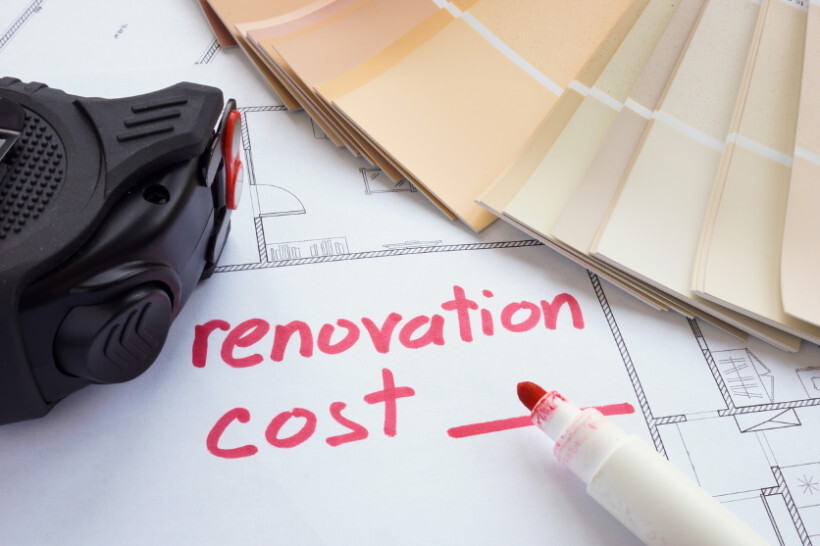 A sketch of renovation plans and estimated costs (Source: iStock)
A sketch of renovation plans and estimated costs (Source: iStock)
Renovating an IKEA kitchen doesn’t have to break the bank. With some smart planning and cost-saving strategies, you can cut down on expenses without sacrificing quality or functionality. Here are some practical ways to reduce your IKEA kitchen installation price:
Use IKEA’s kitchen planning tool. Take full advantage of IKEA’s free kitchen planner to design an efficient layout. It prevents unnecessary purchases and reduces waste in the end.
Watch for IKEA sales and discounts. Kitchen promotions and loyalty program perks like IKEA Family discounts can help you save significantly on cabinets and other essentials.
Stick to standard cabinet sizes. Opt for IKEA’s standard METOD cabinets instead of custom options or third-party modifications. A standard cabinet costs $260, while custom fronts or special sizes can add $300 to $700 per unit.
Reuse existing kitchen cabinets and fixtures. Keep your current appliances, plumbing, and electrical setups if they’re still functional.
Choose laminate countertops. They’re durable and budget-friendly compared to quartz or stone.
Plan renovations during the off-season. Schedule your installation in the winter when demand for tradespeople is lower.
Shop smart for lighting and fixtures. Look for deals on lighting, handles, and taps from other retailers or during sales events. While IKEA handles start at $5 to $15, you can find similar options for $3 to $10 in local stores and elsewhere.
Get multiple installation quotes. Compare quotes from IKEA installers and independent contractors offering professional installation. This will help you find the best value for your budget and ensure transparency about costs and warranties.
Avoid structural changes. Stick to your current kitchen layout to skip expensive structural modifications.
Take control of the design and finishing touches. Once your new kitchen and cabinets are installed, you can paint or customise them yourself to match your preferred style. This gives you more flexibility over colours and finishes. Plus, it’s a great way to save on expenses.
Find trusted IKEA kitchen installers on Airtasker
Your dream kitchen doesn’t have to be a hassle to install. Whether you’re planning a kitchen renovation, need help with cabinet installation, or want expert advice on the design, Airtasker can connect you with skilled tradespeople who can get the job done.
Why struggle with the details when you can post a task and let the pros handle everything? Find local IKEA assembly experts who fit your needs and budget, so you can bring your vision to life.
Learn more about our contributors

Written by Angela A.
Staff Writer
Angela Apolonio is an experienced writer with a Biology background. She writes about home tips, car upkeep, gardening hacks, and food facts, bringing a unique blend of science and practicality to her work. As a wife and a mother, she knows the value of iron-clad routines, so she's passionate about sharing what works for her with everyone else. She loves making everyday life simpler and helping readers find fresh ideas to bring more joy into their spaces.
FAQs about IKEA kitchens
The average cost to install an IKEA kitchen in Melbourne is $1,800 to $12,000, including materials and labour. This can vary depending on the size of the kitchen and any extra work like plumbing or flooring.
In Sydney, the average cost for an IKEA kitchen installation is $2,500 to $10,000. This includes cabinet assembly, installation, and some additional expenses like electrical work or old kitchen removal.
The average cost of installing an IKEA kitchen in Perth is around $2,000 to $12,000. Prices depend on your kitchen size, finish, and whether extra work like benchtop installation is needed.
Yes, you can install your IKEA kitchen yourself since a flatpack kitchen design comes with clear assembly instructions. However, fixing your plumbing, doing electrical work, and installing countertops will still require licensed professionals to ensure a safe fitting in your home.
Yes, you can use IKEA doors on existing cabinets if the sizes match. You might need to make adjustments, like drilling new hinge holes, for older cabinets to fit properly.
Yes, IKEA kitchen cabinets come in standard sizes, like 40, 60, or 80 cm wide for base cabinets. These sizes make it easier to mix and match and create a flexible layout.
Yes, IKEA cabinets can be bought without doors. This gives you the option to add custom doors or create open shelving for a unique look.
Find kitchen renovators, fast
Post a task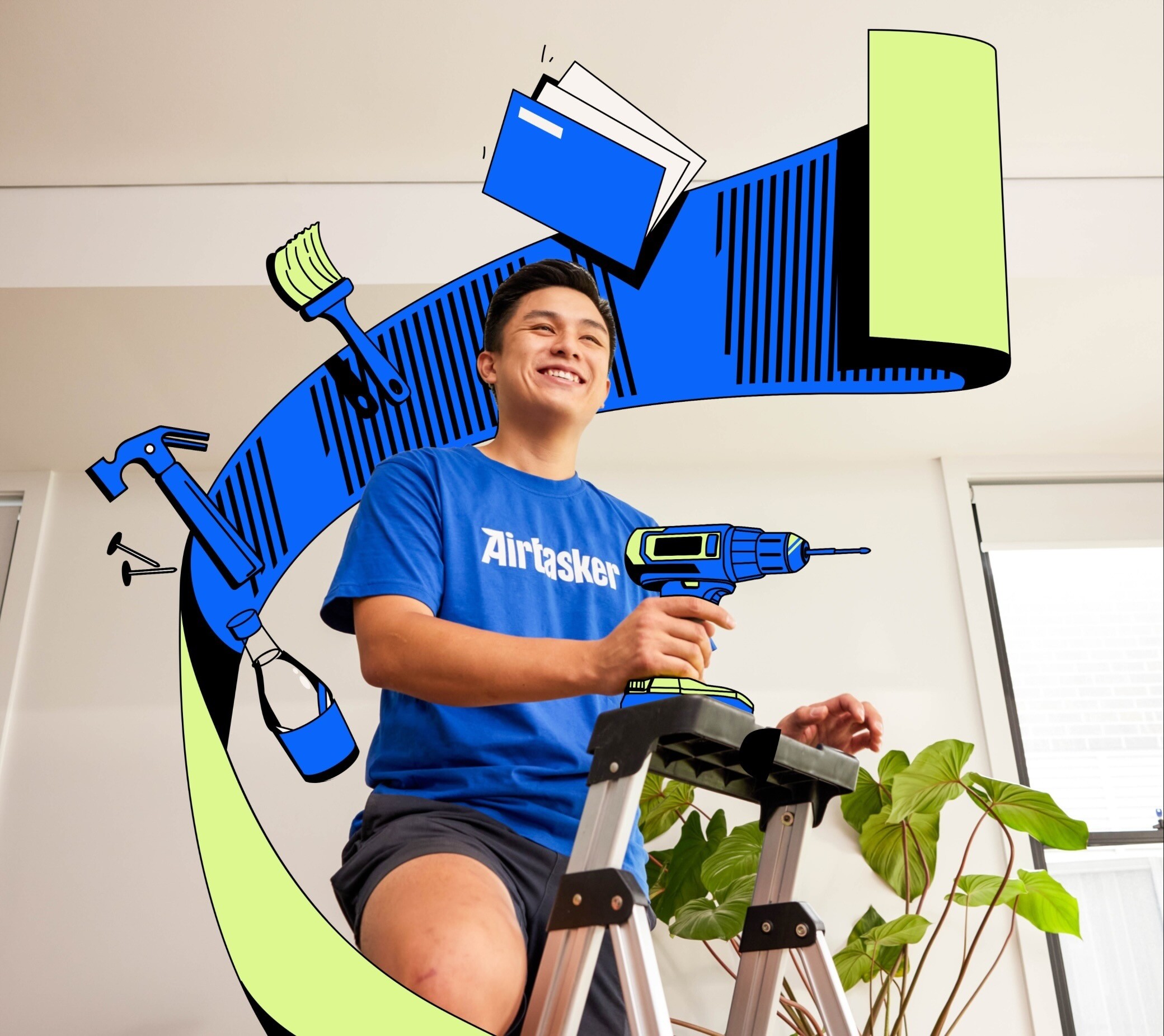
Related price guides
Related articles
